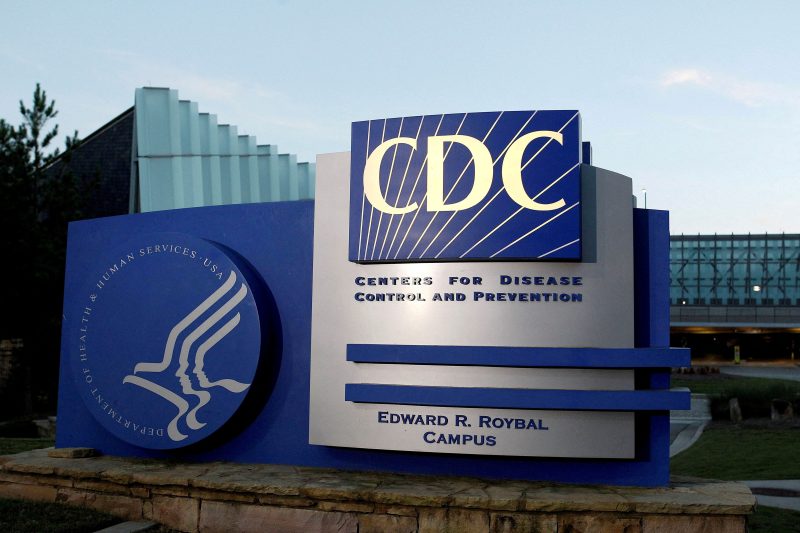“More than 1 in 10 [teenage girls] (14%) had ever been forced to have sex — up 27% since 2019 and the first increase since the CDC began monitoring this measure.”
— news release by the Centers for Disease Control and Prevention (CDC), Feb. 13
The release of the CDC’s 2021 Youth Risk Behavior Survey (YRBS) last month spawned banner headlines about teen girls in the United States being swamped in a wave of violence and trauma. The survey showed a sharp increase in the percentage of girls who have considered suicide or have felt persistently sad or hopeless.
The survey also suggested a dramatic increase in the percentage of girls who had been raped. But in a statement to The Fact Checker, a CDC spokesman acknowledged that the rate of growth highlighted in the news release — 27 percent — was the result of rounding the numbers from more precise decimal-point results. The revised figure when calculated with decimal points is 18.4 percent. In addition, some experts have questioned whether the results have been affected by many schools refusing to ask the question about rape.
After The Fact Checker’s inquiry, the CDC edited the news release and an accompanying page on its website to remove the reference to a 27 percent increase — a number that figured prominently in news reports at the time. The agency also removed a graphic that had highlighted a 20 percent increase in the girls reporting sexual violence in the past four years; the figure using decimal points is 17.8 percent.
The revised news release removes all references to percentage changes in the data. The CDC’s 2019 user guide to interpreting YRBS trend data warns that “using the percent change can be misleading.”
The CDC’s focus on the challenges facing teenage girls — especially regarding mental health — is timely and important. But the CDC’s use of inflated figures on sexual violence could undermine its larger message.
Experts in violence against children had been surprised by the CDC’s February news release but have been stymied in understanding how it was developed because the full YRBS data set will not be released until April. Besides the CDC’s use of round numbers to calculate percentage changes in its news release and news conference, experts identified possible flaws in how the information was collected — particularly the fact that a significant number of schools surveyed refused to ask this question.
That could have biased the sample by possibly removing jurisdictions with lower rates of reporting rape and sexual violence, experts said. Other survey questions with more robust participation by schools — such as violence in dating and violence in bullying — indicated declines, not increases.
“They should have alerted readers of the release that many of the other indicators of violence exposure in the YRBS were flat or showed declines,” said David Finkelhor, a University of New Hampshire professor who is director of the Crimes Against Children Research Center. “The CDC publicity about mental health and suicide ideation among girls has a strong case that is supported by other sources of evidence. But the generalization about violence does not have such support.”
The CDC’s public presentation reported that in 2019, 11 percent of teenage girls said that sometime in their life, they had been forced into sex. By 2021, the number had grown to 14 percent. But, the spokesman acknowledged, the more precise figures were 11.4 percent in 2019 and 13.5 percent in 2021. That represents an 18.4 percent increase — lower than the initial figure, 27 percent.
Similar rounding also inflated the increase in the percentage of teen girls who reported they had experienced sexual violence in the past year, though not to the same extent. “CDC acknowledges the differences in these calculations and those made from whole numbers,” spokesman Paul Fulton Jr. said in a statement, adding that the agency used “whole numbers in the text to make the findings more accessible to a broader audience.”
Finkelhor said the CDC’s assertion that teenage girls faced “record high levels of violence” was undercut by other surveys.
For instance, the National Crime Victimization Survey, conducted by the Census Bureau for the Bureau of Justice Statistics, has indicated that rape and sexual assault of 12-to-17-year-olds has been declining for three decades.
“The NCVS data, which is well known and well regarded by violence epidemiologists, should have tempered their claims about record highs,” Finkelhor said. “There has been a remarkably large decline in crime and abuse over the last 30 years that has benefited children tremendously, but it has gotten little press attention. Perhaps it is reversing, but there are not enough data points over enough time to draw that conclusion.”
Another CDC tool, the Adolescent Behaviors and Experiences Survey (ABES), is conducted online and has a more robust response rate for the same questions on lifetime prevalence of rape and recent sexual violence. The most recent ABES also was conducted in 2021 — in the spring rather than the fall like the YRBS. In the ABES, 10.4 percent said they had once been raped (in contrast to 13.5 percent in the YRBS), and 15.3 percent said they had experienced sexual violence in the past year (in contrast to 17.9 percent in the YRBS).
Asked about the NCVS and the ABES, Fulton said: “We would not compare data across surveys that have very different methods. We do not believe those are reliable comparisons.”
David Stein, a mathematician who studies the rise of adolescent suicide, has dug deep into the available YRBS data and said there has been a sharp increase in the number of schools not giving students questions on sexual violence and rape. In 2017, 4 percent of the students did not answer the question on sexual violence by anyone, but in 2019, this portion rose to 25 percent. For rape, the frequency of missing answers rose from 2 percent in 2017 to 18 percent to 2019.
Fulton said the percentages of students not answering the question were similar in 2021 — 18 percent on the rape question and 23 percent on the sexual violence question. Deep in a report on the 2019 survey, the CDC acknowledged the spike in missing answers on these questions. “Most of these missing data can be attributed to some selected schools administering YRBS questionnaire versions that did not include these questions,” the report said.
Fulton said the CDC conducts a national survey and a scientific sample that is representative of all public and private school students in grades nine through 12 in the 50 states and D.C. Then it provides funding for state and local governments to do their own surveys. “These areas have wide discretion in choosing survey questions and are only required to use two-thirds of CDC’s standard questionnaire,” he said. He added that “the national data are weighted to adjust for school and student nonresponse and to make the data representative of the population of students from which the sample was drawn.”
Finkelhor and Stein said that, nonetheless, the large percentage of students not being asked these questions could have affected the results.
Stein’s analysis of the available 2019 data suggests girls who were not given the questions were considerably younger than those who had received the questions and thus less likely to have had sex and to be sexually active — two factors, he said, that are associated with a higher risk of being a victim of sexual violence.
Elizabeth L. Jeglic, a clinical psychologist who studies sexual violence prevention at John Jay College in New York, said she could not comment specifically on the CDC methodology, but she said sampling and response rate can affect findings. “If the question is asked about lifetime occurrence and younger girls are not being sampled (or less likely to be sampled) you will likely see a higher prevalence rate as older girls will have more years to experience sexual violence than younger girls,” she said in an email.
Stein noted that in 2019, there was a curious divergence in the results of two YRBS questions having to do with dating violence. The question concerning sexual dating violence — when someone was forced to kiss, touch or have intercourse — had a big jump in missing answers. The percentage of students reporting such violence increased substantially, reversing a previous decline. But the question on physical dating violence — when someone was physically hurt on purpose — had no change in missing answers and showed no reversal in trends.
The rape question asks whether a person had been forced into sex anytime in their life, as opposed to many other questions that ask about violence in the previous year. Another reason the increase reported by the CDC surprised researchers is that it is unusual for a lifetime measure to spike so much between biennial surveys because there is significant overlap in the students being surveyed two years apart — half of the high school population surveyed in 2019 would be in the 2021 survey. Stein said the best explanation is not a sharp increase in rapes but that the missing data affected the result.
Janet Lauritsen, former president of the American Society of Criminology, said the NCVS also has had a decline in youth participation since the introduction of the sexual orientation and gender identity questions in 2016.
“Until the CDC presents a thorough assessment of nonresponse and weighting in the YRBS, it is very difficult to say which data source presents a more accurate depiction of the changes in sexual violence among youth,” Lauritsen said. “No data source is without error, and my personal opinion at this time is that until the YRBS data are made public and such an assessment is done, I have more confidence in the youth trends presented in the NCVS.”
The CDC also claimed that the jump in students reporting a rape in their lifetimes was the “the first increase since the CDC began monitoring this measure.”
But the figure had jumped previously in consecutive surveys, such as from 10.3 percent to 11.9 percent from 2001 to 2003 (a 15.5 percent increase).
Fulton said that the CDC was referring to a 10-year trend, 2011 to 2021, and that the agency was comparing that decade to the 2007-2017 period and the 2009-2019 period. “In that [2017] report and again for 2019 (2009-2019) there were no significant increases in forced sex across those time periods,” he said.
But his statement acknowledged there was an increase — just not a “significant” increase. The percentage of girls reporting a rape in their lifetimes did not change from 2007 to 2017 but rose from 10.5 percent in 2009 to 11.4 percent in 2019. That’s an increase of 8.6 percent.
The CDC’s website has not yet corrected this error.
In its public presentation, the CDC had a responsibility to use accurate statistics on the percentage change in sexual violence, given how those numbers were certain to appear in news reports. The CDC should also more clearly state that some of the results in recent years may be affected by these questions not being asked of a large percentage of students. Acknowledging limitations in some parts of the survey will give people more confidence in the rest of the data.
The CDC earns Two Pinocchios.
(About our rating scale)
Send us facts to check by filling out this form
Sign up for The Fact Checker weekly newsletter
The Fact Checker is a verified signatory to the International Fact-Checking Network code of principles



























